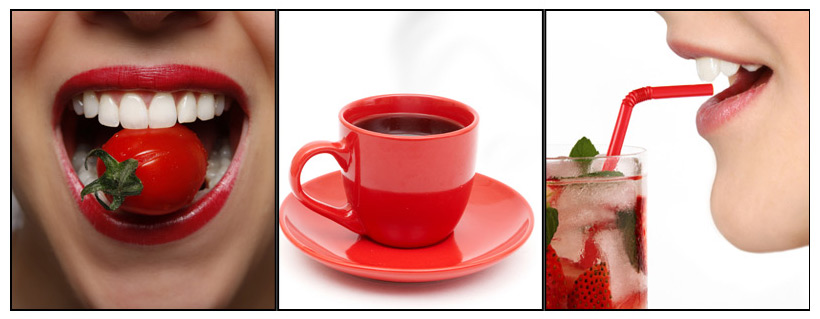Menu

Date: 12th Sept., 2016
Dentin hypersensitivity is by nature a diagnosis of exclusion. It is one of the most common patient complaints and usually described by the patient as a short, sharp pain arising upon non-noxious stimuli; thermal, tactile of osmotic; examples being cold or hot intake, brushing or acidic beverages. Despite being very prevalent, with reported prevalence being 25-30% in Indian dental patient population cohorts (1,2) and lower rates in general populace, only a small percentage of patients (5-10%) actually seek treatment or try home use desensitizing products for its management. (3) Thus it has been described in literature as one of the most common under-diagnosed and inadequately managed dental problems. It is surprising then that while a lot of consideration has been given in literature to the management of this condition, studies that addressed diagnostic aspects of dentin hypersensitivity have been relatively few. (4)
One of the major challenges in diagnosis is that there appears to be no one ‘pathognomonic’ diagnostic test. Instead, clinical diagnosis is based upon a constellation of clinical features. Reports have also found that not only is dentin hypersensitivity a complex condition, it is also one of the most commonly misunderstood with large numbers of dental professionals facing challenges in understanding the true nature of its etiology, clinical predisposing features and correct diagnosis. A study found 64% dentists attributed bruxism or malocclusion as hypersensitivity triggers although neither has been related to this condition in research. (5)One of the reasons stated, is that accurate diagnosis requires time to exclude alternative causes of pain, unlike dental caries. Moreover, while several diagnostic tests using various stimuli have been used, we also know that there are large differences in individuals’ response to stimuli. Pain perception is subject to a range of psychological, physiological, cultural and situational factors.(4) Not only that but patient description of symptoms, clinical history in dentin hypersensitivity also can differ substantially, adding to a clinician’s dilemma in assessment. (4, 6). Unfortunately, in chronic sufferers inadequate relief of this problem has been associated with a poorer quality of life and can be distressing to the patient. Needless to say, a clear and concise diagnostic consensus can ease the clinician’s challenge in properly spotting this irksome problem.
Several conditions can be mimic common symptoms of dentin hypersensitivity. (7, 8) These include (but are not limited to!)
Patient and risk Factors: Typically, dentin hypersensitivity is presented by the adult patient, with peak incidence reported in 30-49 year age group. Several reports have noted a slightly higher incidence in females and commonly affected teeth are incisor, canine and premolars with upper premolars being the most common area of complaint. Several patient factors can imply a high risk:
Diagnostic Flow: It is recommended that all dentate patients presenting with suspected dentin hypersensitivity should undergo a verbal screening as a first step followed by detailed history taking. (5) The initial verbal ‘screeening’ entails asking the patient if any teeth hurt on eating or drinking hot, cold or acidic foods or beverages and if symptoms are noted on brushing or after any restorative procedures. A positive answer would indicate a need for more detailed history.
The patients history needs a careful note of quality (sharp) and duration (short), identifying the pain causing stimuli; thermal, chemical, mechanical ( old being the most common), ascertain the patient’s concern and desire for managing the condition, asking about intrinsic and extrinsic acidic exposure ( hyperacidity, GERD, cola or juice consumption).
The patient examination is chiefly focused on excluding alternative causes of pain (as described in differential diagnosis). These may include radiographs, caries diagnostic devices, percussion testing, occlusion and bite stress assessments. It is important to determine if exposed dentin areas are present; these may be in form of cervical erosions, occlusal facets or abrasive lesions. The next step involves application of stimuli to confirm a ‘hypersensitive’ pain response. Several such tools have been used: air jet using an air syringe, cold water jet, ice/other thermal stimuli, running a dental explorer or periodontal probe on the area of complaint. The cold test is the best recommended tools and is easily controllable. It is recommended that two different stimuli such as an air jet and running an explorer mesio-distally both be used for confirming a diagnosis. There should be sufficient interval between stimuli to avoid overlapping response. The use of alternative stimuli such as an electric pulp tester is at best controversial and no more valid than cheaper cold or tactile tests. (8) These tests can be done in two ways; entin hypersensitivity might either be evaluated in terms of either increasing stimulus intensity to that necessary to provoke pain (stimulus-based assessment) or a subjective evaluation of the pain produced by a standard intensity stimulus (response-based assessment). It is important to understand that a stimulus-based assessment is limited by baseline patient variability in pain stimulus, what is painful for one patient may go uneventfully perceived for another. In a response-based method, each hypersensitive tooth is isolated by placement of operators fingers on adjacent teeth and a timed stimulus, for e.g an air blast applied. The subject’s response if scaled by using an arbitrary verbal ‘pain score’ of 1-10, can very useful in monitoring the response to further treatment.
In the next part we will look at the aspects of hypersensitivity management by desensitizing toothpastes.


| PRODUCTS | QTY | PRICE | VALUE in INR |
|---|
| PRODUCTS | QTY | PRICE | VALUE in INR |
|---|